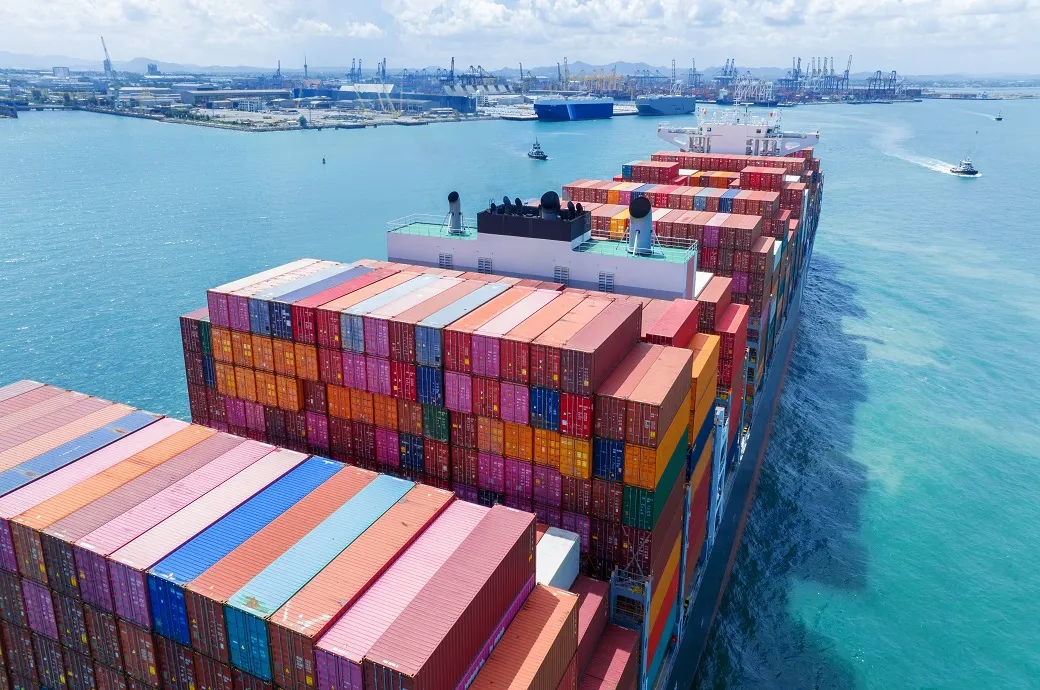Ocean Freight Rates Reach a 20-Month Low
In August 2025, global ocean freight charges plunged to their lowest in nearly two years, reflecting a significant dive in both head haul and back haul routes. This shift, largely driven by US tariff impacts and diminished shipping demand, signals a complex landscape for international cargo transport.
Key Trends Driving Freight Rate Decline
- Sharp Fall in Asia-US Spot Rates: The routes connecting Asia and the United States witnessed a steep drop in spot prices, particularly on both US coasts.
- Temporary Rate Stabilizations Insufficient: Efforts such as blank sailings – where certain voyages are canceled to balance capacity – only managed to create short-lived steadiness.
- Macroeconomic Pressure Intensifies: Downward revisions to global GDP and retail sales forecasts, paired with inflated inventories, contributed to softer freight demand.
The Dynamics Behind the Drop
The global ocean freight rate indexes for both primary (head haul) and return (back haul) trips dipped sharply, with the head haul index falling to approximately 131.8 in August — a decline of over 11 points since May, and a staggering drop of 174.3 points year-over-year. This trend mirrors the cooling off following the early 2025 rally linked to tariff shifts on US-China trade.
What really put the kibosh on rates? Two main culprits emerged: persistent US tariffs and an overabundance of shipping capacity flooding the market. After an initial spike in container spot rates in May and early June fueled by shippers rushing to move freight ahead of tariff escalations, the tide turned by mid-June. General Rate Increases (GRIs) failed to buoy prices, and rates on major Asia-US lanes steadily fell.
Asia-US Freight Market in Focus
By early August, spot rates had collapsed by 58% on the US West Coast and 46% on the US East Coast compared to just two months prior in June. Even a 90-day suspension of US tariffs between late May and early June proved a fleeting relief. As cargo volumes waned and capacity still outstripped demand, carriers braced for a leaner peak season.
In response, many opted to blank sailings—skipping scheduled voyages—and to rearrange services. While these maneuvers temporarily steadied rates, they couldn’t reverse the overall slide. Additional incoming ships threatened to worsen the surplus capacity issue, sustaining downward pressure on freight costs through the remainder of the year.
Macroeconomic Headwinds and Inventory Effects
The background economic scene hasn’t helped either. As global GDP and retail sales outlooks were downgraded over the summer, manufacturers and retailers found themselves stuck with inflated inventories. This pile-up created less urgency in shipping fresh cargo, weakening demand for logistics services worldwide.
Summary Table: Freight Rate Changes August 2025 (compared to June 2025)
| Vägbeskrivning | Spot Rate Drop (%) |
|---|---|
| Asia to US West Coast | 58% |
| Asia to US East Coast | 46% |
Påverkan på global logistik
Lower ocean freight rates can be a double-edged sword for logistics. On one hand, they reduce shipping costs for importers and exporters, potentially boosting trade volumes and making global supply chains more cost-efficient. On the flip side, persistent low rates can squeeze carrier margins, prompting reduced service frequency or consolidation—factors that ripple through cargo scheduling and capacity planning.
For freight forwarders and logistics providers, this environment demands nimble adjustments. Overcapacity issues mean spotting the right window to lock in shipping space and costs becomes subtle art. Meanwhile, shippers benefit from the chance to negotiate better rates, especially for bulky or irregular goods.
Looking Beyond the Numbers: Real-World Effects
This downturn might not shake the entire global logistics industry overnight, but it offers a telling glance into the balancing act between supply and demand in ocean shipping. For businesses relying on cargo shipments—whether moving pallets of products, vehicles, bulky freight, or office and home relocations—staying attuned to these market gyrations is crucial for timely, budget-savvy planning.
Plattformar som GetTransport.com step into this space by connecting shippers with affordable, reliable transportation solutions worldwide. Whether arranging household moves, delivering commercial freight, or coordinating the haulage of oversized cargo, users can benefit from transparent pricing and flexible service options, helping smooth the volatility of shipping markets.
Why Personal Experience Still Matters
While detailed reports and honest shipping feedback provide valuable guidance, nothing beats firsthand experience when choosing a transportation partner. Reliable service, precise timing, and cost-effectiveness can vary widely between providers. With GetTransport.com, customers gain access to a broad marketplace of logistics options at competitive rates, empowering well-informed decisions tailored to unique cargo needs without breaking the bank.
Convenience, affordability, and a diverse portfolio of transport modes make it easier to adjust in real time as the ocean freight landscape evolves. Boka din resa på GetTransport.com and take control of your cargo’s journey with confidence.
Slutsats
The global ocean freight market has cooled off dramatically, hitting lows not seen since early 2023. This comes amid tariff-driven trade tensions, overcapacity in shipping fleets, and subdued demand caused by economic uncertainties and high inventories. While this dynamic may pressure carriers, it offers opportunities for shippers to optimize costs and logistics strategies.
Whether moving international shipments, bulky goods, or managing house moves, understanding these freight trends helps in navigating supply chain planning more effectively. With GetTransport.com, businesses and individuals alike can seize the advantage of competitive pricing and reliable freight forwarding solutions that keep pace with the changing transport landscape. It’s a handy tool in the toolbox for smarter global cargo delivery and distribution.

 Ocean Freight Rates Hit 20-Month Lows Amid Weakened Demand and Shipping Overcapacity">
Ocean Freight Rates Hit 20-Month Lows Amid Weakened Demand and Shipping Overcapacity">